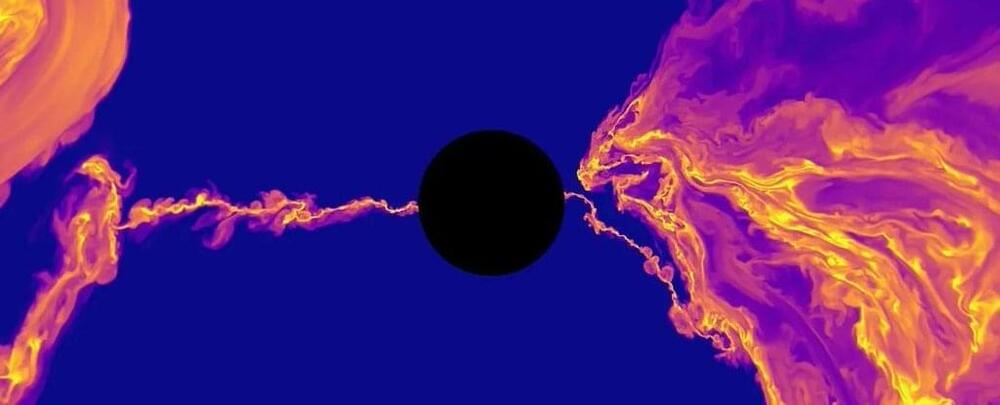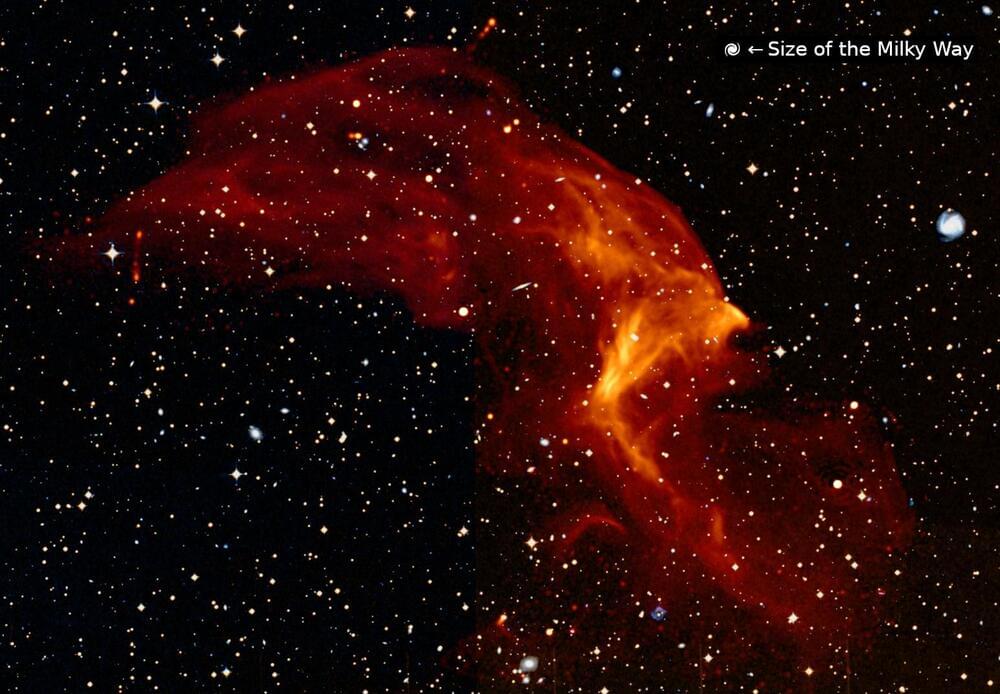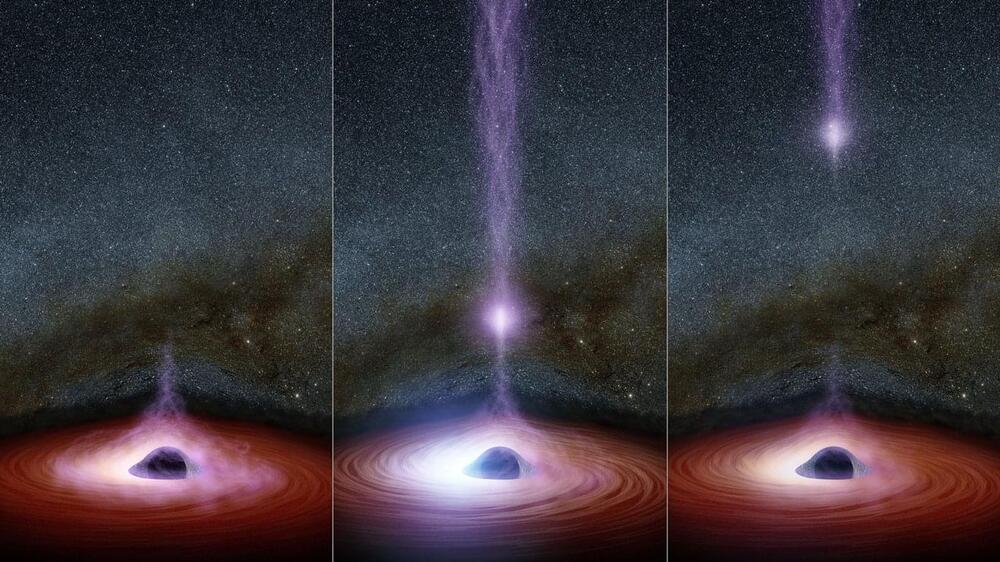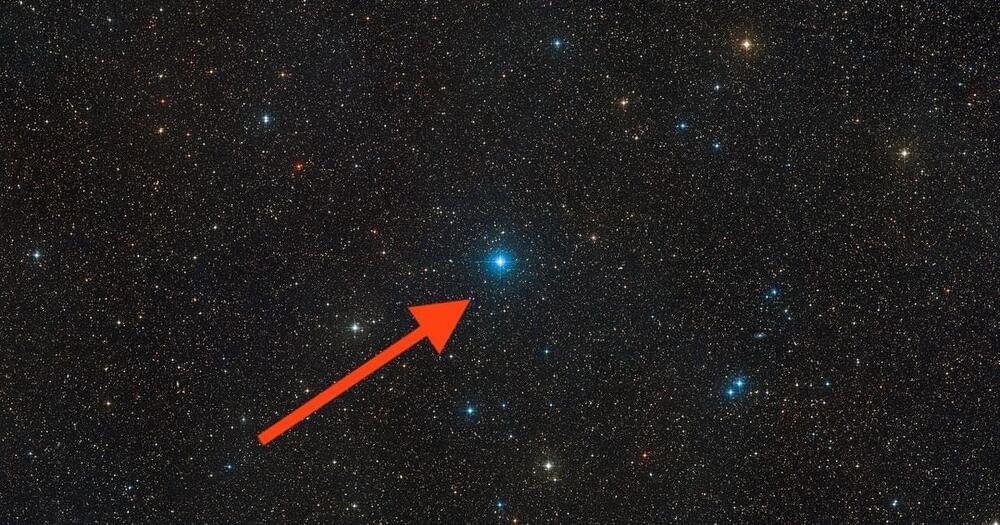Category: cosmology – Page 271

Supercomputers Simulated a Black Hole And Found Something We’ve Never Seen Before
While black holes might always be black, they do occasionally emit some intense bursts of light from just outside their event horizon. Previously, what exactly caused these flares had been a mystery to science.
That mystery was solved recently by a team of researchers that used a series of supercomputers to model the details of black holes’ magnetic fields in far more detail than any previous effort. The simulations point to the breaking and remaking of super-strong magnetic fields as the source of the super-bright flares.
Scientists have known that black holes have powerful magnetic fields surrounding them for some time. Typically these are just one part of a complex dance of forces, material, and other phenomena that exist around a black hole.
Black Holes Vs Wormholes Explained — Are they Related? 4K
Wormhole vs Black hole? Which one do you prefer? Most importantly which one truly exists?
Why don’t you watch this video and find out because the information will shock you! Today you’ll FINALLY find out if you can in reality TIME TRAVEL!
So spread the video to pass the word.
Wondering what would happen if you fell into a Black hole? How about if the whole universe got sucked into it? Scary but you’ll get the answers in this video as well.
Enough said. Black hole conversations can be pretty dark.
So do like, share and subscribe to our channel Because it’s Interesting!
What’s On The Other Side Of A Black Hole?
PBS Member Stations rely on viewers like you. To support your local station, go to: http://to.pbs.org/DonateSPACE
↓ More info below ↓
Sign Up on Patreon to get access to the Space Time Discord!
https://www.patreon.com/pbsspacetime.
Sign up for the mailing list to get episode notifications and hear special announcements!
https://tinyurl.com/yx9cusk5
Check out the Space Time Merch Store.
https://pbsspacetime.com/
Normal maps are useless inside black holes. At the event horizon — the ultimate point of no return as you approach a black hole — time and space themselves change their character. We need new coordinate systems to trace paths into the black hole interior. But the maps we draw using those coordinates reveal something unexpected — they don’t simply end inside the black hole, but continue beyond. In these maps, black holes become wormholes, and new universes lie on the other side.
Hosted by Matt O’Dowd.

Astronomers See an Enormous Shockwave — 60x Bigger Than the Entire Milky Way Galaxy
Astronomers have a thing for big explosions and collisions, and it always seems like they are trying to one-up themselves in finding a bigger, brighter one. There’s a new entrant to that category – an event so big it created a burst of particles over 1 billion years ago that is still visible today and is 60 times bigger than the entire Milky Way.
That shockwave was created by the merger of two galaxy clusters to create a supercluster known as Abell 3667. This was one of the most energetic events in the universe since the Big Bang 0, according to calculations by Professor Francesco de Gasperin and his time from the University of Hamburg and INAF. When it happened over 1 billion years ago, it shot out a wave of electrons, similar to how a particle accelerator would. All these years later, those particles are still traveling at Mach 2.5 (1500 km/s), and when they pass through magnetic fields, they emit radio waves.

Detailed Supercomputer Simulation of the Universe Creates Structures Very Similar to the Milky Way
In their pursuit of understanding cosmic evolution, scientists rely on a two-pronged approach. Using advanced instruments, astronomical surveys attempt to look farther and farther into space (and back in time) to study the earliest periods of the Universe. At the same time, scientists create simulations that attempt to model how the Universe has evolved based on our understanding of physics. When the two match, astrophysicists and cosmologists know they are on the right track!
In recent years, increasingly-detailed simulations have been made using increasingly sophisticated supercomputers, which have yielded increasingly accurate results. Recently, an international team of researchers led by the University of Helsinki conducted the most accurate simulations to date. Known as SIBELIUS-DARK, these simulations accurately predicted the evolution of our corner of the cosmos from the Big Bang to the present day.
In addition to the University of Helsinki, the team was comprised of researchers from the Institute for Computational Cosmology (ICC) and the Centre for Extragalactic Astronomy at Durham University, the Lorentz Institute for Theoretical Physics at Leiden University, the Institut d’Astrophysique de Paris, and The Oskar Klein Centre at Stockholm University. The team’s results are published in the Monthly Notices of the Royal Astronomical Society.

Scientist Finds ‘Evidence’ of Another Universe Before This One
“The next universe will be just like ours — but only in overall appearance, not in detail, of course…”
A researcher may just have discovered conclusive evidence that another cosmos existed before this one. Not only that, but he also claims that ours is just the latest in an infinite series of universes. Professor Sir Roger Penrose argues that our known cosmos is the latest in a long line of previous universes, answering the question of what was ‘there’ before the Big Bang.
Another Universe Before This One
According to Professor Sir Roger Penrose, a former College of late Professor Hawking, our universe still carries the scars of the events of our universe’s predecessor, which was destroyed some 14 billion years ago. Prof Penrose, a researcher from the University of Oxford, is one of the world’s most distinguished theoretical physicists. He claims evidence suggests our universe is just the latest in an infinite series of universes, each emerging phoenix-like from its predecessor in a Big Bang.

What’s Inside a Black Hole? Quantum Computers May Be Able to Simulate It
Both quantum computing and machine learning have been touted as the next big computer revolution for a fair while now.
However, experts have pointed out that these techniques aren’t generalized tools – they will only be the great leap forward in computer power for very specialized algorithms, and even more rarely will they be able to work on the same problem.
One such example of where they might work together is modeling the answer to one of the thorniest problems in physics: How does General Relativity relate to the Standard Model?